Honduran President Mel Zelaya has started Operación Tijera (Operation Scissors). He says he is going to cut the electrical power to everyone who hasn't paid their bills, starting with the largest debtors. This is incredible and I'm starting to believe that he means business.
After appointing four different heads to the national electric company, La ENEE, in a little over one year, he has apparently realized that "if you want a job done right, you just have to do it yourself." A week ago he took over the reins, spending, he says, six hours a day from 3 p.m. to 9 p.m. trying to straighten out the mess.
La ENEE loses approximately L. 3 billion per year (U.S. $158 million). They can't provide enough power for the entire country even though 30% of population doesn't even have electricity. La ENEE doesn't have money for badly needed improvements or even basic maintenance and there has been talk of rationing electricity. It's been said that the major problem is the theft of electricity and non-payment of the monthly bills.
President Zelaya enlisted other government officials in the operation making it the number one priority of the nation. The officials are assigned to Operation Scissors Fridays through Mondays and are expected to do their normal jobs on Tuesdays through Thursdays. Moreover, those who don't produce the dollars will have their failure reflected in their annual evaluations. Mel fires ministers with bad evaluations.
 These officials serve as the commanders supervising the operations in 39 Honduran cities. The squadrons consist of La ENEE functionaries, police, military, district attorneys, and technicians. Besides cutting the power of those who owe or have illegal connections, they are changing out the meters of 28,000 high consumers because they believe the meters have been tampered with.
These officials serve as the commanders supervising the operations in 39 Honduran cities. The squadrons consist of La ENEE functionaries, police, military, district attorneys, and technicians. Besides cutting the power of those who owe or have illegal connections, they are changing out the meters of 28,000 high consumers because they believe the meters have been tampered with.Yesterday's La Prensa reported that the tijeras had cut the power to 700 clients, including some of the most powerful people and biggest companies in the country. Former President Rafael Leonardo Callejas, undoubtedly one of the most blatantly corrupt people in Honduran history (even though he has yet to be convicted on a single count), had power cut to two of his businesses for 5 years of unpaid debts totaling U.S. $20,000 each.
The tijeras came to the new, huge City Mall in San Pedro, with the largest La ENEE debt in San Pedro Sula. Their power was cut momentarily until they rushed to the bank to make payment. The famous country club of the rich of San Pedro, Club Hondureño Arabe, was found to be stealing electricity direct from the lines at a cost estimated to be L.283,000 per month.
 Electricity to the luxurious Honduras Maya Hotel (photo at right), owned by the vice president of the National (political) Party Jorge Abudoj, was cut as well. Lear Kyunshing, one of the largest businesses saved themselves by immediately paying a debt of L.903 thousand. Business owner and Liberal Party member, Gilberto Goldstein, was granted one day to pay his bill.
Electricity to the luxurious Honduras Maya Hotel (photo at right), owned by the vice president of the National (political) Party Jorge Abudoj, was cut as well. Lear Kyunshing, one of the largest businesses saved themselves by immediately paying a debt of L.903 thousand. Business owner and Liberal Party member, Gilberto Goldstein, was granted one day to pay his bill.Arturo Corrales Álvarez, former presidential candidate and current president of Semeh, the subcontractor responsible for measuring and issuing electric bills throughout the country, was found to have an illegal connection at a building he owns along with a L. 40,000 past due account. Suspicious billing practices of Semeh are being investigated as well.
What's funny is that they are cutting the power of the cutters, too. They cut the power for one big shot diputado (congressman) who has a 'direct electrical connection' (read 'illegal') to his brand new mansion (photo at top). In January, he threatened workers and refused to allow La ENEE to install a meter. It is estimated that he uses about L.5,000 of electricity per month. (Our house runs about L.1,500 per month to give you a comparison.) It was cut while he was out supervising 'the scissors' in another area.
Here in La Ceiba, Wendy's, Popeye's, Hotel VIP Siesta, Helados Castillo, and Hotel Monserat had their power cut. In Choluteca, 114 business and homes were left in the dark, representing a debt of L. 2.8 million. In Puerto Cortes, two big hotels, Banco de Occidente, and Texaco Caribbean were the major debtors. Power to several gas stations was cut in Comayagua.
 I tried to pay my own electric bill online today (Not because it's late − It's not!) and couldn't even get on the system for a few hours. The newspaper reported that the banks and La ENEE offices throughout the country are bursting at the seams and that the banking system collapsed for a time yesterday. It seems like many folks are trying to beat the scissors! The newspaper reported, however, that most of the payers were "of humble origins."
I tried to pay my own electric bill online today (Not because it's late − It's not!) and couldn't even get on the system for a few hours. The newspaper reported that the banks and La ENEE offices throughout the country are bursting at the seams and that the banking system collapsed for a time yesterday. It seems like many folks are trying to beat the scissors! The newspaper reported, however, that most of the payers were "of humble origins."In four days, Operacíon Tijera has recovered L. 80 million (U.S. $4.2 million).
Today many cheaters are coming forward with explanations, excuses, and "proof" that their illegal connections were authorized (through bribes, no doubt). Officials admit that since Sunday, they have been receiving pressure from powerful sectors to suspend the program, but so far the government seems to be holding strong.
One headline read "Nadie se salvó de la tijera" (No one is safe from the scissors!) This is exciting stuff.
(I hope my cable internet company has paid their bills!)








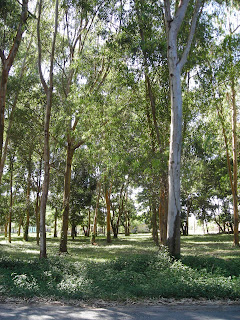

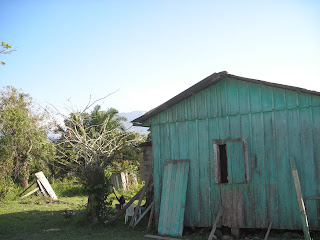




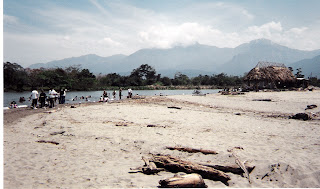





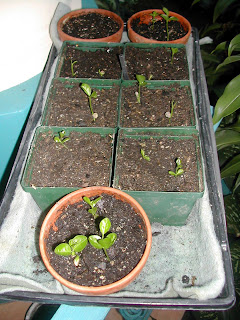


















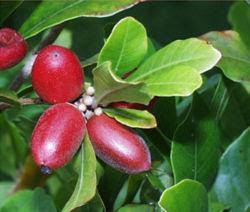

 Welcome to my Blogicito —
Welcome to my Blogicito — 








